 | |  |
| UPPER LEFT POCKET | |
| The upper left pocket of my backpack is vertical and has a nylon shelf dividing the top and bottom of the pocket. Each of these two compartments contains a small stuff sack—one for toiletries, and the other for utility/emergency items. The products displayed below go in one or the other of these two bags:
| |
| Stuff Sacks
| |
|
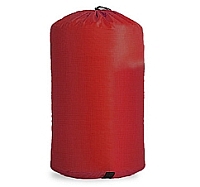
|
|
In Boy Scouts, the motto is "Be Prepared." Part of being prepared is being organized, and when it comes to backpacking, nothing helps organize like stuff sacks. Get some little ones. Get some medium size ones. Get some big ones. Get them in different colors so you know which one is which. Get them in bright colors so you can find them in the dark. You can't have too many stuff sacks.
|
|
| Biodegradable Soap
| |
|
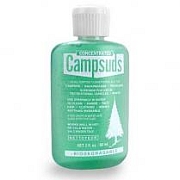
|
|
Biodegradable soap is a standard item when it comes to backpacking. It is an all-purpose product for cleaning anything, from yourself to your pots and pans. It is safe for the environment and a little goes a long way. I have always used Campsuds, as shown here, but there are other brands available.
|
|
| Travel Toothbrush
| |
|

|
|
Just your basic travel toothbrush that folds up into itself, along with a travel sized tube of toothpaste. One note of caution... the smell of toothpaste can attract animals, so you may not want to spit it out near your campsite. Also, if your camping in areas with bears, you might want to put your toothpaste in a sack with your food and hang it high in a tree at night.
|
|
| Chapstick
| |
|

|
|
Especially if you're camping in really hot or cold weather, a tube of chapstick is worth bringing along.
|
|
| Poison Ivy Cream
| |
|
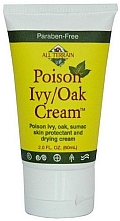
|
|
On my first campout as Boy Scout, my patrol leader, whose name I can still remember because of this incident, pitched my tent directly on a nice patch of poison ivy. I woke up the next morning with a lovely rash down the entire side of my body. After several other severe encounters with this nasty plant, I learned how to identify it from a distance and have managed to avoid it as an adult. Since I was a kid, products have emerged that are capable of neutralizing the chemicals from poisonous plants. I carry a tube of poison ivy cream in my pack just in case. There are several brands on the market and I don't know which one might be the best.
|
|
| Lighter
| |
|

|
|
While some Boy Scouts might be capable of starting fires by rubbing two sticks together, I have always found it much more convenient to use a lighter. While any lighter like the one shown here will probably work fine if kept dry, I actually prefer ones that are transparent so that I can see how much fluid is left in the lighter before heading out on a long trip.
|
|
| Waterproof Matches and Container
| |
|
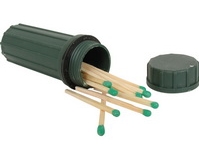
|
|
It may seem redundant to carry a lighter and waterproof matches, but it is always good to have a backup product for something this important. Waterproof matches are cheap, available at any sporting goods or camping store, and should be kept in a waterproof container like the one shown here.
|
|
| Notepad and Pen
| |
|

|
|
I don't know if most people would consider a pad and pen as emergency items, but I like to be able to jot things down as they occur to me. I take notes on my campouts about what I learned, what I might do differently in the future, which campsite might be better next time, etc.
|
|
| Earplugs
| |
|
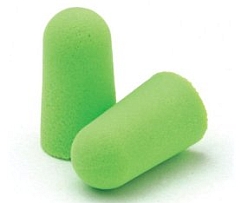
|
|
I didn't require these as a kid, but as an adult, I can't go camping without them. I am a light sleeper, and earplugs help me get to sleep and stay asleep. I have found them to be very useful when sleeping near tents occupied by other Scout dads who snore. An extra set has also come in handy to help calm a child who has heard scary noises outside of the tent.
|
|
 | |  |
















